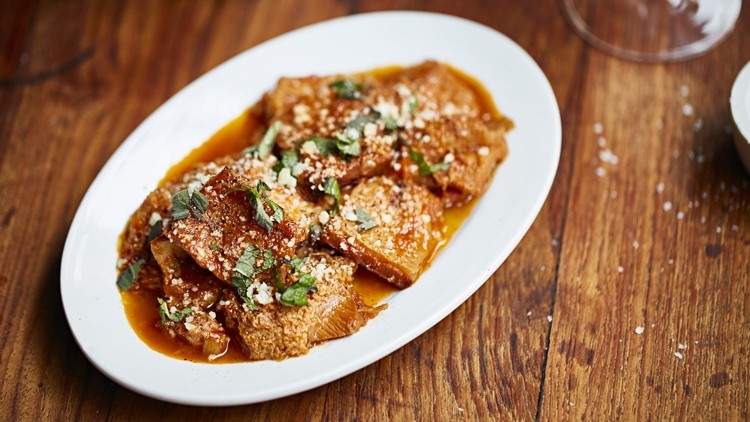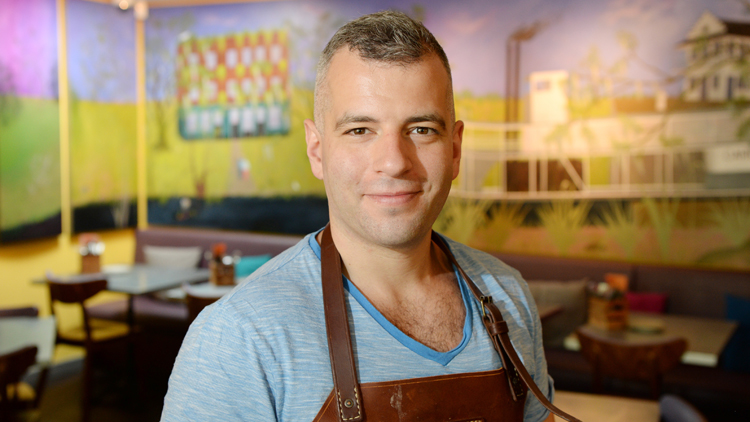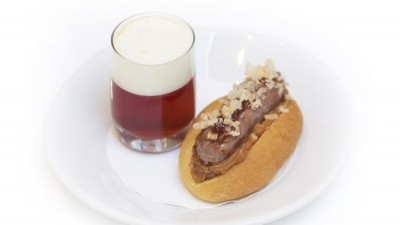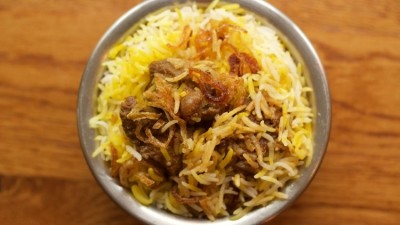Chef masterclass: Trippa alla romana by Jacob Kenedy

Romans have a fondness for offal, borne of historical necessity but embraced with gusto. The rich pickings from a beef or lamb carcase are the four quarters: many dishes from the city’s traditional peasant diet, however, are made from what Romans call the quinto quarto (the ‘fifth quarter’), the animal’s cheap but flavoursome innards and organs.
There is coratella, for example: the ‘pluck’ – heart, liver, kidneys, lungs and spleen – of a lamb, calf or kid, chopped up and fried with artichokes, those most Roman of vegetables. And pajata, the intestines of a young calf, cleaned and skinned but still filled with its mother’s milk, the milk turning pleasingly cheesy when cooked.
These can be simply grilled, or cooked in a classic Roman tomato sauce and served with rigatoni. Oxtail is popular, too, particularly slow-cooked with celery to make coda alla vaccinara, named after the many vaccinari (butchers) in the ancient Roman quarter of Regola: the district’s inhabitants were sometimes known as mangiacode, ‘tail eaters’. Testarelle di abbacchio, the roasted head of a lamb or kid, is another meaty speciality, often served with potatoes.
And there is trippa alla romana, tripe cooked in tomato sauce. At Bocca di Lupo, in Soho, chef proprietor Jacob Kenedy describes the dish as “my favourite lunch, and my strongest memory of Rome”. Kenedy lived in the city for a year before opening his restaurant in 2008, using it as a base from which to explore the rest of Italy and her various cuisines, but dining often in the trattorie of Rome. Sora Margherita, in Rione Sant’Angelo, is a particular favourite: a cramped, atmospheric trattoria, decorated with vintage posters and serving traditional Roman specialities to appreciative hordes of locals and tourists.
He is an offal aficionado. “The wonderful thing about offal is that each kind has a distinct flavour. And the flavours are stronger in older animals, but much more delicate in young beasts that have done less work: compare ox liver and calves’ liver, for instance.”
His philosophy for trippa alla romana is to “treat it like a pasta dish, with the tripe cooked like rigatoni: perky and a little al dente”. His sauce, in fact, is a kind of sugo all’amatriciana, the famous Roman pasta sauce that features lardons of guanciale – cured pork jowl – fried until the fat melts, then cooked with tomatoes. Guanciale is widely available these days – but, at a pinch, you could use unsmoked pancetta instead.
Kenedy buys his tripe pre-cooked – ‘white’ tripe – so that it only needs to stew in the tomato sauce for half an hour or so to become tender. The sauce is flavoured with bay leaf, a pinch of chilli – “Italians are wary of spice, but use more if you like” – and mentuccia, a kind of mint used widely in the Roman kitchen, especially for flavouring artichokes cooked alla romana, with lemon, garlic and olive oil. Known as either pennyroyal or lesser calamint in English, it has a flavour halfway between mint and oregano “and you can just substitute a couple of sprigs of both”.
Kenedy makes a sort of brunoise to “sweat briskly” in the fat from the guanciale and a judicious glug of olive oil and keeps the chopping quite rough, “so you get varied textures and flavours in the finished sauce,” he says. When the vegetables are tender, he throws in the tripe, stirs it for a minute, then pours in a glass of dry white wine and lots of tinned tomatoes. “Don’t bother with fresh ones, especially in winter,” he advises. “Buy good quality tinned tomatoes instead.”
The dish is finished with the mentuccia and a sprinkling of pecorino romano, a hard sheep’s milk cheese that is the southern Italian counterpart of Parmigiano Reggiano. Despite its name, nearly all the pecorino romano made in Italy comes from Sardinia. It gives a pleasantly salty, lactic tang and is the classic topping for pasta dishes in Rome, as well as being the main ingredient of the cacio e pepe sauce served clinging to spaghetti across the city.
Trippa alla romana, says Kenedy, is manna to tripe lovers, and a good introduction for the uninitiated. “The pervasive aroma of tripe is balanced by equally strong flavours: guanciale, tomatoes, bay, pecorino and mentuccia. All you need to make the meal complete is a crust of bread and a rustic red.”
Trippa alla romana, by Jacob Kenedy
Serves 4 to 6 as a starter, 2 to 3 as a main
Ingredients:
100g guanciale (or pancetta), skin removed
1kg cooked beef tripe
Half a carrot, roughly diced
1 celery stalk, roughly diced
1 small onion, roughly chopped
4 tbsp extra virgin olive oil
2 garlic cloves, sliced
1 large bay leaf
1 tsp freshly ground black pepper
Pinch of crushed dried chilli flakes
800g chopped tinned tomatoes
150ml white wine
4 sprigs mentuccia (see text)
100g pecorino romano, grated
Method:
1. Cut the guanciale into chunky, 1cmx2cm lardons. Chop tripe into bite size pieces, about 3cmx5cm.
2. Fry the lardons in a dry pan over a high heat until they start to crisp. Add the vegetables, olive oil, garlic, bay leaf, pepper and a big pinch of salt, turn the heat down to medium, and cook until tender: 10 to 15 minutes.
3. Add the tripe and the chilli, stir for a minute, then add the wine and tomatoes. Simmer gently, uncovered, for about 30 minutes, until the sauce is very thick and the oil has risen to the surface.
4. Top with the chopped mentuccia, the grated pecorino and a twist of black pepper, and serve.
Recipe taken from Bocca Cookbook, by Jacob Kenedy, published by Bloomsbury






















